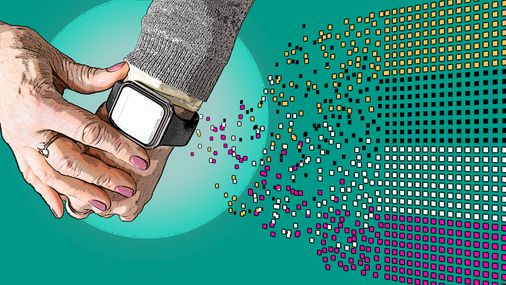Budding technology should be adapted for eldercare
Wearable and contactless health and activity sensing devices, including smartwatches, have been adopted over the last decade, and many have monitoring capabilities related to such wellness-related factors as physical activity, sleep, and stress. These technologies have the potential to help older adults age safely in their own homes by detecting acute adverse events like falls, as well as predict the onset and progression of chronic illness.
Simultaneously, a variety of industries have adopted artificial intelligence-based data analysis methods. These developments, when applied to monitoring devices, have the potential to enable precision and adaptive, data-driven interventions, granting clinicians and caregivers critical insight into the health status of patients. They also have the potential to monitor the home environment, enhancing residents’ safety.
However, many of these technologies, starting with most wearable health-monitoring devices, have not been developed with older adults and their caregivers in mind. Specifically, many existing health technologies are burdensome for older adults to use, are not sufficiently accurate for medical purposes, and sometimes come with algorithmic biases that make them less effective for older users. For example, commercial sleep trackers can be inaccurate for older adults with disordered sleep, frequent waking, and medication-induced sleep disruptions. They can also fail to capture the day/night (circadian) rhythm sleep patterns of individuals with AD/ADRD. Similarly, wearable and mobile devices designed for general consumers can prove burdensome for older adults due to complex user interfaces, small display sizes, and the need for frequent charging.
Another critical issue is that the resulting deluge of fine-grained data generated by such devices, though theoretically full of useful information for caregivers and clinicians, are rarely actionable. For example, clinicians treating AD/ADRD patients are often asked to advise families on how to navigate “transition points,” such as deciding when and if to hire a caregiver, asking for additional family help, or moving a family member to an assisted living facility or nursing home. Data from health monitoring devices could potentially factor into such decisions, but they are currently not presented in a way that reflects important considerations such as changes in caregiver burden, or the level of support AD/ADRD patients need to complete activities of daily living (e.g., eating, dressing, personal care).
The way to overcome these issues is to do research, and a lot of it. One new effort, which we lead, is the Massachusetts AI and Technology Center for Connected Care in Aging and Alzheimer’s Disease, a multidisciplinary research center spanning the University of Massachusetts Amherst, Brigham and Women’s Hospital, Massachusetts General Hospital, Brandeis University, and Northeastern University.
An especially promising research thread involves applying artificial intelligence to shortcomings of current technologies deployed in the service of aging at home and patients with AD/ADRD. There are three broad settings where AI has the potential to make a remarkable difference in how older adults and their care providers interact with such technologies. First, AI algorithms may be trained to spot concerning patterns in data flows that correspond to beneficial, and adverse, health outcomes. Second, AI can help package data flows in such a way that they become more immediately useful to caregivers and clinicians. And finally, AI tools may help future designers create increasingly adaptive, even personalized, treatment technologies.
These research threads require not just dedicated clinicians and computer scientists, but also significant shared research resources, including home-like “living labs” that are highly instrumented with sensors to validate new technologies over prolonged periods. Also necessary are specialized lab facilities for studying technologies for monitoring sleep, human motion, medical rehabilitation, and assistive devices.
An essential part of this research practice involves circling back to key stakeholder groups, including patients, caregivers, and clinicians, who can provide feedback on the usability and utility of the technologies. What works at an institutional scale may also hold true at the level of communities experimenting with new approaches to all aspects of later life, from housing to urban planning to tech. When it comes to making improvements for a better old age, actual, real-world outcomes are the only outcomes that matter.
Deepak Ganesan, director of the Massachusetts AI and Technology Center for Connected Care in Aging and Alzheimer’s Disease, is a professor in the Manning College of Information and Computer Sciences and director of the Center of Personalized Health Monitoring at UMass Amherst. Niteesh Choudhry, director of MassAITC, is a professor at Harvard Medical School, and director of the Center for Healthcare Delivery Sciences at Brigham and Women’s Hospital. Benjamin Marlin, associate director of MassAITC, is an associate professor at the Manning College of Information and Computer Sciences at UMass Amherst.








Gloss